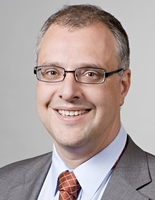Einführung in die Biophysik
Zuordnung zu Modulen:
|
| VO |
2 |
Bausch, A.
Gerland, U.
Herzen, J.
|
Mo, 14:00–16:00, GALILEO 300
|
Übung zu Einführung in die Biophysik
Zuordnung zu Modulen:
|
| UE |
2 |
Burger, L.
Englbrecht, F.
Gerland, U.
Herzen, J.
Hsu, C. … (insgesamt 8)
Leitung/Koordination: Bausch, A.
|
|
Aktuelle Themen der Biomechanik
Zuordnung zu Modulen:
|
| SE |
2 |
Bausch, A.
|
|
Anleitung zu wissenschaftlichem Publizieren
Diese Lehrveranstaltung ist keinem Modul zugeordnet.
|
| SE |
2 |
Bausch, A.
|
|
Biophysik-Winterschule 2023
Zuordnung zu Modulen:
|
| WS |
2 |
Bausch, A.
Rief, M.
|
einzelne oder verschobene Termine
|
CPA Seminar
Zuordnung zu Modulen:
|
| SE |
2 |
Bausch, A.
Rief, M.
|
|
FOPRA Experiment 72: Laser-Trapping Microscope (Bacterial Flagella) (BIO)
LV-Unterlagen aktuelle Informationen
Zuordnung zu Modulen:
|
| PR |
1 |
Bodescu, M.
Vannier, D.
Leitung/Koordination: Bausch, A.
|
|
FOPRA-Versuch 07: Molekulare Motoren (BIO)
aktuelle Informationen
Zuordnung zu Modulen:
|
| PR |
1 |
Heiler, A.
Kurzbach, S.
Leitung/Koordination: Bausch, A.
|
|
Forschungspraktikum mit biologischem Schwerpunkt (CH0511)
eLearning-Kurs
Diese Lehrveranstaltung ist keinem Modul zugeordnet.
|
| PR |
6 |
Bausch, A.
Buchner, J.
Dietz, H.
Haslbeck, M.
Rief, M. … (insgesamt 6)
|
|
Functional Protein Assemblies
Zuordnung zu Modulen:
|
| SE |
1 |
Bausch, A.
|
|
Praktikum Biophysik für Studenten der Biochemie
eLearning-Kurs LV-Unterlagen
Zuordnung zu Modulen:
|
| PR |
4 |
Bausch, A.
Dietz, H.
Lieleg, O.
Rief, M.
Simmel, F. … (insgesamt 7)
|
Mi, 08:00–13:00, CPA EG.006A
|
